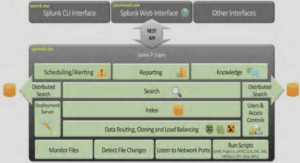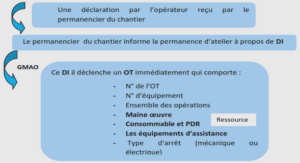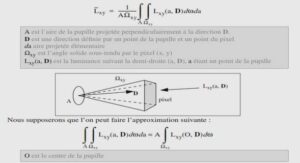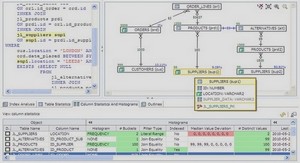On May 26, 2003, the Galileo program was agreed upon officially by the European Union (EU) and the European Space Agency (ESA) with the launch of the legal entity which will have the task of coordinating ESA and EU involvement in Galileo: the Galileo Joint Undertaking (GJU). Galileo is a proposed satellite navigation system, to be built by the EU and ESA, autonomous but also complementary to the American Global Positioning System (GPS). The system is expected to be completely operational by 2013. Galileo is intended to provide to all users a greater precision than what is currently available and a positioning system upon which European nations can rely even in times of crisis. It will also provide an improvement in the coverage of satellite signals at higher latitudes, which northern regions such as Scandinavia will benefit from.
On May 26, 2003, the Galileo program was agreed upon officially by the European Union (EU) and the European Space Agency (ESA) with the launch of the legal entity which will have the task of coordinating ESA and EU involvement in Galileo: the Galileo Joint Undertaking (GJU). Galileo is a proposed satellite navigation system, to be built by the EU and ESA, autonomous but also complementary to the American Global Positioning System (GPS). The system is expected to be completely operational by 2013. Galileo is intended to provide to all users a greater precision than what is currently available and a positioning system upon which European nations can rely even in times of crisis. It will also provide an improvement in the coverage of satellite signals at higher latitudes, which northern regions such as Scandinavia will benefit from.
The development phase concerns all the elements of the Galileo system: the satellites, the receivers, the ground stations, the networks but also the Galileo signals design. This last point is an important topic because the Galileo signals should allow the share of the frequency bands, always occupied by other system such as GPS for instance, while offering a good spectral isolation when needed, a better robustness against interference and good tracking performance. The signal choice goes also through a study of the signals generation in the satellite payload in order to identify possible factors of distortions whose effect can be reduced by choosing signals with particular properties. Moreover, payload consideration is one of the important factors involved in a GNSS signal design.
It is within the framework of the Galileo signals choice that the CNES (Centre National d’Etudes Spatiales), member of the Galileo Signal Task Force (STF), an European committee in charge of the Galileo signals design, has sponsored this Ph.D., dedicated to contribute to the optimisation of the Galileo signals and the related payload.
The aim of this thesis is to optimize the Galileo transmission chain from a signal point of view. This optimisation focuses on the Galileo signals and their generation in the satellite payload. The tasks identified to reach this objective have been divided into the following research goals:
➤ To study and analyze the Galileo transmission chain in order to identify equipment being able to induce impairments on the signals. This objective can be divided in more precise stages:
• To analyze the payload architecture to identify emission equipment being able to induce impairments during the signal generation. The payload is composed of different units, that have to be carefully characterized, in particular the amplifier and the atomic clocks.
• To analyze the receiver architecture to identify, this time, equipment being able to induce impairments during the signal reception.
• To study the signal propagation and analyze the effect of the multipath on the signal performance.
➤ To study the tracking modules of the receiver in particular the code Delay Lock Loop (DLL) and the carrier Phase Lock Loop (PLL) since these elements provide the observables, directly used for positioning, timing and the study of the performance from a receiver point of view.
➤ To identify signal properties allowing to reduce the impact of the identified impairments factors and to establish if the Galileo signals, proposed by the GJU and
GSA, verify these properties. These properties can be linked to both the signals waveforms and the signals multiplexing modulations.
➤ To estimate the performance of the Galileo baseline E1 signals and analyze if the new waveforms (Composite Binary Coded Symbols (CBCS) and Composite Binary Offset Carrier (CBOC)), proposed and chosen to optimize this signal, permit both to improve the performance from a receiver point of view and to verify the signal properties reducing the influence of the transmission chain impairments.
➤ To evaluate through simulations the impact of signals impairments due to Galileo system equipment on receiver performance using some specific figures of merit. This evaluation will allow to deduce optimal operating point of the payload amplifier and find optimal payload architecture.
Galileo will be the Europe’s own global navigation satellite system, providing global positioning service under civilian control. It will be inter-operable with GPS (Global Positioning System) and GLONASS, the American and Russian global satellite navigation systems .
Galileo is based on a constellation of 27 satellites (plus 3 in reserve) and ground stations providing information concerning the positioning of users in many sectors such as transport (vehicle location, route searching, speed control, guidance systems, etc.), social services (e.g. aid for the disabled or elderly), the justice system and customs services (location of suspects, border controls), public works (geographical information systems), search and rescue systems, or leisure (direction-finding at sea or in the mountains, etc.). The 27 satellites, constituting Galileo constellation, will be on a medium earth orbit (MEO) and distributed in 3 circular orbits planes at an altitude of 23222 km. Each orbit plane will have an inclination of 56° and will contain 9 operational satellites plus one operational spare. This geometry will guarantee availability of the service under all but the most extreme circumstances ([ESA, 2005]). Each Galileo satellite will broadcast signals to be processed by Galileo receivers to compute position. Through this processing, the receivers extract measurements giving indication of the distance from the user to the satellite. Each satellite will broadcast 10 different navigation signals whose carrier frequencies are within the 1.1 to 1.6 GHz band.
These different Galileo navigation signals will be described in this chapter. Their frequency bands and their associated services will also be presented. Moreover, the power link budget of the Galileo system, depending on the signals and the frequency bands, is exposed.
Chapter 1 Introduction |





